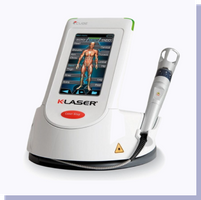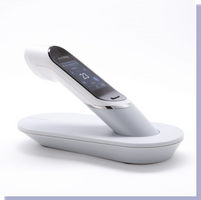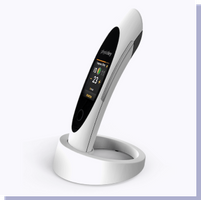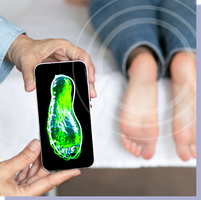Do you experience heel pain regularly? Does the pain appear mainly with the first step and gradually disappear after a few minutes of walking?
If you answered yes to these two questions, you probably suffer from a heel spur .
What is a heel spur?
This is not the same animal with spiky spines, but rather an inflammation of the main ligament in the foot, called the “Plantar Fascia.”
Hence the name of the pathology “Plantar Fasciitis.” The phenomenon is more common in women than in men.
A heel spur is actually an inflammation of the Plantar Fascia, which is a band of tissue that runs along the bottom of the foot. This band connects the heel bone (Calcaneus) and is fan-shaped and connects to the toe bones (Metatarsals).
The ligament’s function, among other things, is to absorb shocks while walking, running, etc. Sometimes, when we put pressure on it, it becomes overstretched and microscopic tears develop in it, leading to inflammation.
Sometimes there is a calcification process, from which a bony spur develops in the heel bone, which can be seen on an X-ray. This spur is called a heel spur. The spur looks like a thorn, hence the nickname given by many – a spur.
Contrary to what many people think, the bursa is not the main cause of pain, but rather the presence of inflammation in the ligament attached to it. It does not even appear in all cases.
The intensity of the pain caused by the inflammation may be moderate to extremely severe and can cause significant difficulty walking, limping, and sometimes even great difficulty stepping on the foot at all.
Without appropriate treatment, the problem may become chronic, affect nearby organs, cause significant long-term functional impairment, and in extreme cases, require surgical intervention.
What are the causes of heel spurs?
In one word – overload.
Prolonged standing (especially on hard surfaces), intense sports activity – multiple steps, uncontrolled running, flat foot structure or extremely high arches, heavy body weight or sudden weight gain, and more.
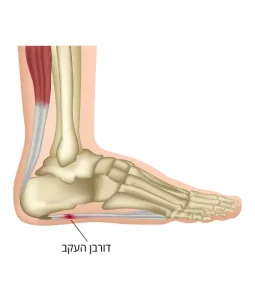
What are the solutions for heel spurs?
There are many ways to treat a spur:
Rest, fitting insoles , proper shoes, physical therapy exercises, placing cold compresses on the inflamed area, specialized orthopedic devices, medications according to a doctor’s prescription, injections, shock wave therapy, and surgery.
No one wants to go to the operating room so quickly. Therefore, you should first treat with the other options and make sure to reach good professionals.
Important to know: Heel spurs are a very common pathology. Many people tend to wait and not treat the problem. Please note: the longer you wait, the more chronic the problem will become, the more painful it will be, and the harder it will be to get rid of it. Therefore, see an orthopedic foot specialist and ask for advice.
The correct treatment in most cases will be a combination of several solutions, not just one of them. We will explain some of them in detail.
Rest: When there is inflammation (not just in the heel, but anywhere in the body), the first thing to do is to reduce stress and let the affected area rest. A common example of a situation where a person does not rest as they should is people who do a lot of walking or sports and who have difficulty stopping the activity. This causes cumulative damage and worsens the condition.
Insoles: In order to relieve the load on the inflamed ligament, it is necessary to support it and let it rest, since naturally and in its normal state it is in a constant state of tension. This is an action that only an insole can do. It is not worth postponing treatment of the condition because it will only get worse. Go to a consultation as soon as possible and treat the problem.
The right shoe: A sports shoe will meet the need in most cases.
The important features that a shoe should have are:
1. A stiff sole that does not bend easily.
2. “Rocker” – meaning that its toe (the front part under the toes) is raised as shown above.
Shoes with these features will help the foot move from one step to the next without stretching and folding the inflamed ligament.
Stretching exercises and physiotherapy: Physiotherapy is an essential tool in the range of solutions offered for the treatment of a spur. There are exercises suggested by physiotherapists that may significantly reduce both the pain and the level of inflammation and thus help resolve it. Examples of exercises: stretching the foot, the gastrocnemius muscles and the hamstrings, applying ice after activity, rolling the foot on a ball along the plantar fascia, Kinesio taping.
Orthopedic accessories to relieve heel spur pain
There are two types of accessories that may help with spur pain: Night splint and Strasbourg sock.
A night splint – an orthopedic device designed for use while sleeping, and helps significantly relieve pain felt when first stepping in the morning. It does have some notable drawbacks, however, and is hardly used today.
The disadvantage of the brace is that it is a cumbersome, bulky, heavy, and uncomfortable product. Today, there is a solution that works on the same principle but is much more comfortable, easier, and simpler to assemble: the Strasbourg sock.
Strasbourg stocking – an orthopedic accessory for nighttime use, just like the bulky brace we mentioned earlier, but more user-friendly and simple. This is a sock for everything. When used, it maintains a slight flexion of the foot towards the shin (dorsiflexion) and prevents the contraction of the damaged ligament. Patients who have used the Strasbourg stocking report a significant reduction in the pain they felt in the morning, a shortening of the healing time, and a reduction in the need for medication.

